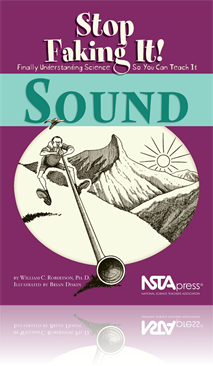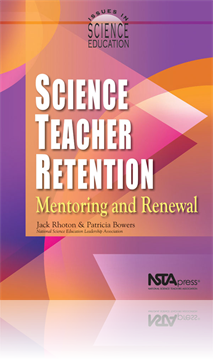All Book Chapters
Book Chapter
Stop Children, What's That Sound?
Aging hippies might recognize the title of this chapter from an old Buffalo Springfield song. Others will just have to ignore it, and realize that this is the first chapter in a book on sound. As you go through this book, you'll be exposed to scient...
Book Chapter
Unless you really haven't been paying attention to the world around you, you know that plucked strings produce sounds. Carlos Santana demonstrates this on a regular basis. Because stringed instruments are so commonly used to produce sounds, we're g...
Book Chapter
Sound travels in waves, but those waves aren't exactly like waves on a string. One nice things is that sound waves have all the same relationships between frequency, wavelength, and velocity that waves on a string have. In this chapter, we will fin...
Book Chapter
Harmonic convergence refers to a day back in 1987 where there was a particular planetary alignment. New Agers went crazy over the event, and if you want to get a taste of what it was like, enter harmonic convergence into your favorite Internet searc...
Book Chapter
Yep, you guessed it. This chapter is all about music. Yes, we've already talked about music and musical instruments, but we're going to get into this subject in more detail. For example, you might already know that larger musical intruments tend t...
Book Chapter
We've covered most of the basics of how sound is produced and transmitted, but we've left something out, and that's all the electronic devices we use to amplify sound, reproduce it, or get it from one place to another. How exactly does a CD player w...
Book Chapter
Turnover and Shortages among Science and Mathematics Teachers in the United States
After establishing how many teachers depart from their teaching jobs and how these rates compare with other occupations, this chapter presents statistics on the reasons why teachers move from or leave their teaching jobs. These data are drawn from it...
Book Chapter
Collaborative Efforts to Retain New Teachers: A University-School District Partnership
This chapter describes the Teacher to Teacher Program—a collaborative effort between Furman University and two local school districts. The program provides an avenue for improved teacher retention and mentoring. The partnership creates a community ...
Book Chapter
ASIST: An Induction Program for Science Teachers
Quality induction programs are needed for science teachers. This chapter describes one program—Alternative Support for Induction Science Teachers (ASIST)—developed specifically for beginning science teachers based upon their expressed and demonst...
Book Chapter
Honoring Adult Learners: Adult Learning Theories and Implications for Professional Development
Designers of adult learning must consider carefully the research on adult learning and change and factor this into learning designs. In this chapter, the author reviews a classic adult learning model and two contemporary theories—constructivism and...
Book Chapter
The Model Science Laboratory Project: Lessons Learned about Teacher Retention
This chapter presents the Model Science Laboratory Project in the Rice University/Houston Independent School District. The project provided support, training, and time for teachers to refine their instruction of science to urban students in the Houst...
Book Chapter
Beginning Teacher Mentoring Programs: The Principal's Role
Successful teacher mentoring programs require strong leadership. School principals must be prepared to provide this leadership by planning, organizing, implementing, and evaluating a mentoring program that is based on research and best practice. This...
Book Chapter
New science teachers may be retained using a multifaceted approach. First, school districts may use an on-site training program to induct new science teachers. Second, schools may arrange the master schedule to support new teachers. Finally, veteran ...
Book Chapter
Mentoring for Professional Renewal: The Kentucky Experience
This chapter offers an overall perspective on the value of mentoring for new and experienced teachers. It also identifies characteristics of effective mentoring drawn from reports of existing programs, primarily from a statewide teacher induction pro...
Book Chapter
Recruitment and Retention of Secondary Teachers in New York State
The chapter examines how one urban school district in New York State recruits and retains secondary science teachers. The main finding is that the recruitment, retention, and renewal of science teachers is practiced differently at the district and sc...



